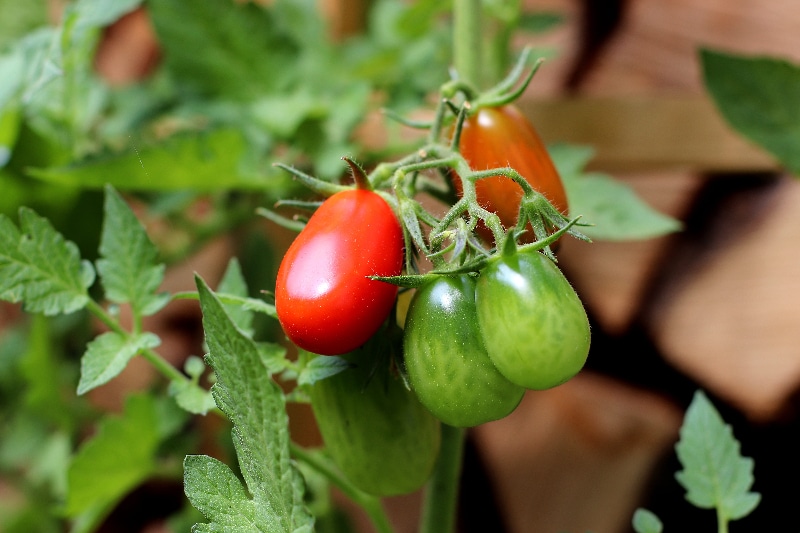There are three factors to master if you want to know how to grow tomatoes commercially. Being one of the leaders in the tomato industry, venturing into tomato production can be a worthy endeavor for US growers. However, remember that much like in any crop production, growing tomatoes commercially demands your full effort and attention.
Below are three factors to ensure that you’ll be familiar with tomato production. However, it’s worth emphasizing that you must have an idea of the industry itself to make the necessary adjustments tailored to your circumstances. It would also be helpful to partake in classes for commercial tomato production.

Step #1. Planning
According to the University of Tennessee, growing tomatoes commercially demands close attention to detail. This endeavor requires you to handle the high level of management and provide the labor and capital necessary to keep the production running. Therefore, planning is the most crucial step if one wants to know how to grow tomatoes commercially.
First, know your local tomato market because you want to be able to produce tomatoes ready for the market by strategizing your planting calendar. This way, you can schedule your production to meet the most profitable time. This includes knowing when you’ll have lesser competition or when the demand for tomatoes is high.
You also want to secure distribution channels before you start growing. You have to ensure that you can sell your harvest and avoid wasting tomatoes. Your area should have reliable tomato distributors, or you can talk to people that know where you can sell your yield.
Step #2. Site preparation
Another critical point when learning how to grow tomatoes commercially is knowing the best site for the crops. Each region has an ideal timing for growing tomatoes, but each state also has an area that will be best for growing the crops as well. The good news is that depending on the variety; you should have a vast selection of tomato production sites or consider expanding in the greenhouse to prevent climates’ challenges.
In general, tomatoes can grow in any fertile and well-draining soil, but it’s preferable if your site also has sandy loam soil. Avoid planting in areas that stay soggy or those with previously grown solanaceous crops such as peppers and eggplants to prevent diseases on your tomatoes.
You will need to till your area first to ensure optimal yields on your crop since this enhances the soil structure for root growth and development. More so, please ensure that your site can support the deep root system of tomatoes. And lastly, a useful tip for growing tomatoes commercially is using raised beds for planting since this design prevents waterlogging.
Step #3. Choosing tomato varieties
The next consideration after planning and selecting the site is choosing the tomato varieties suitable for your area. More so, you have to keep in mind what variety will give you excellent marketable yield and acceptability. Start by choosing tomato varieties that will adapt well to your area’s condition and then filter through your selection by prioritizing those with good quality for the market.
This may sound simple, but each factor affects the success of your commercial tomato production. For example, if your plant ends up incompatible with your area, you will have an underwhelming yield or low-quality fruits that are hard to sell. More so, you want to have a good yield for every season.
Growers also consider disease-resistance to prevent drawbacks during production. Disease control is one aspect of growing tomatoes commercially that can make or break your production. Even though you have excellent management control, it’s more advantageous to consider varieties that are less likely to get diseases.
What Are The Costs And Returns In Growing Tomatoes Commercially?
As one can expect, the production costs for growing tomatoes commercially will vary depending on your area. You can classify variable costs as plants, lime and gypsum, fertilizer, plastic, fumigation, insecticide, fungicide, herbicide, stakes and string, labor, cleanup, machinery, irrigation, land rent, and interest on operating capital. On the other hand, the fixed costs for your operation will be the annual departmental payment, machinery, irrigation, land, and overhead, and management.
You can check the extension offices in your area to know more about the budgets necessary for growing tomatoes. To give you numbers, you can expect a breakeven point is grossing $3,000 per acre if you have sold 75% of your tomatoes. Experience in production will provide you techniques that can reduce costs.
Therefore, a strategic way is to start at a small scale and gradually increase once you become efficient in this endeavor. More so, be prepared to adapt your production system to the changes in the market. You should be able to anticipate optimistic and pessimistic values when producing tomatoes.
Conclusion
Those in the US can consider venturing into commercial tomato production. However, you must consider three steps to learn how to grow tomatoes commercially without drawbacks. They include planning, site preparation, and tomato variety selection.
These three factors are significantly influential in ensuring that your production system will thrive in the competitive industry. Remember that commercial tomato production requires management skills and preparation for the challenges each year. However, your knowledge shouldn’t stop in these three factors as the industry is ever-changing.
